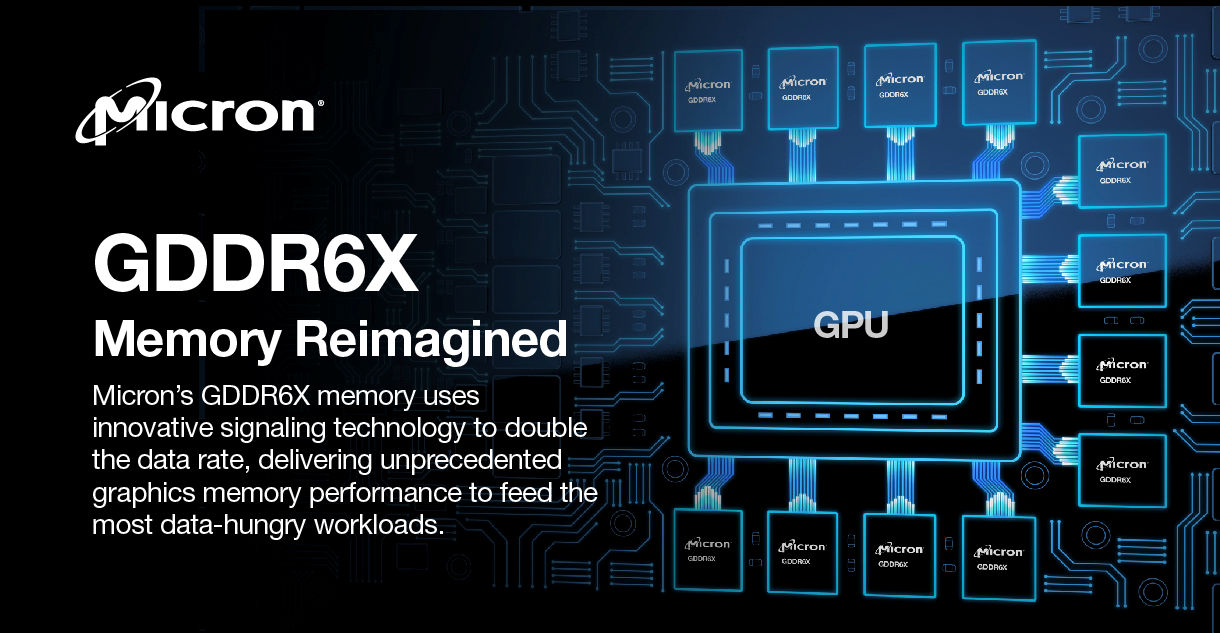GDDR6X memory has played a very important role in the current generation of NVIDIA graphics cards, the GeForce RTX 30. As some of our readers may remember said memory was jointly developed by NVIDIA and Micronwhich explains why the green giant was the only company that had access to it, and this gave it a huge advantage over AMD, which could only use GDDR6 memory.
For comparison purposes, it is enough to remember that the Radeon RX 6000 only used GDDR6 memory at a maximum of 16 GHz in its debut, while NVIDIA was able to mount 19.5 GHz GDDR6X memory in the GeForce RTX 3090. This memory peaked with the GeForce RTX 3090 Ti, which mounts chips at 21 GHz. Well, the fact is that Micron has continued to improve this graphics memory standard, and according to new information, production of the graphics memory chips has already begun. 2 GB (16 Gb) GDDR6X memory at 24 GHz.
It is not yet clear which graphics cards within the GeForce RTX 40 series are going to use those new chips, but I think it is most likely that 24 GHz chips are limited to the GeForce RTX 4090and that 21 GHz chips are used in the GeForce RTX 4080 and GeForce RTX 4070. At some point we may see a GeForce RTX 4090 Ti with even faster GDDR6X memory.

GDDR7 will succeed GDDR6X and promises to reach 32 GHz
It’s still two to three years away from being used, but we already know that GDDR7 memory is in its early stages of development, and that this could be the one that powers the successors of the GeForce RTX 40 and Radeon RX 7000, whose launch is scheduled for the end of this year. If no problem arises, this new standard will reach 32 GHz frequencyan impressive figure that will significantly increase bandwidth.
In case anyone is not clear about why bandwidth is so important when we talk about graphics cards, I’ll explain it to you in a moment. bandwidth indicates the speed at which the GPU can access the data contained in the graphics memory, which means that the higher it is, the faster the graphics core can work. This is why reducing the bandwidth can completely cripple a very powerful GPU.
So that you can compare a 32 GHz GDDR7 memory configuration with a 256-bit memory bus could reach 1TB/s bandwidth, while a 16 GHz GDDR6 memory configuration on a 256-bit bus would give us a bandwidth of 512GB/s The difference is very big, and we are talking about twice the bandwidth compared to the current generation while maintaining the same bus.














